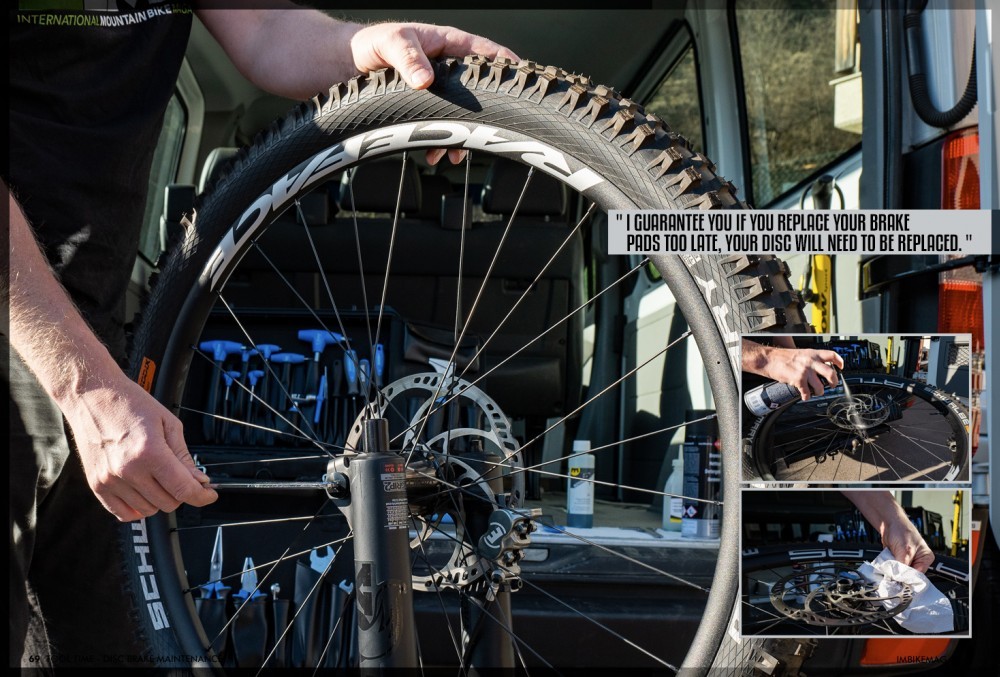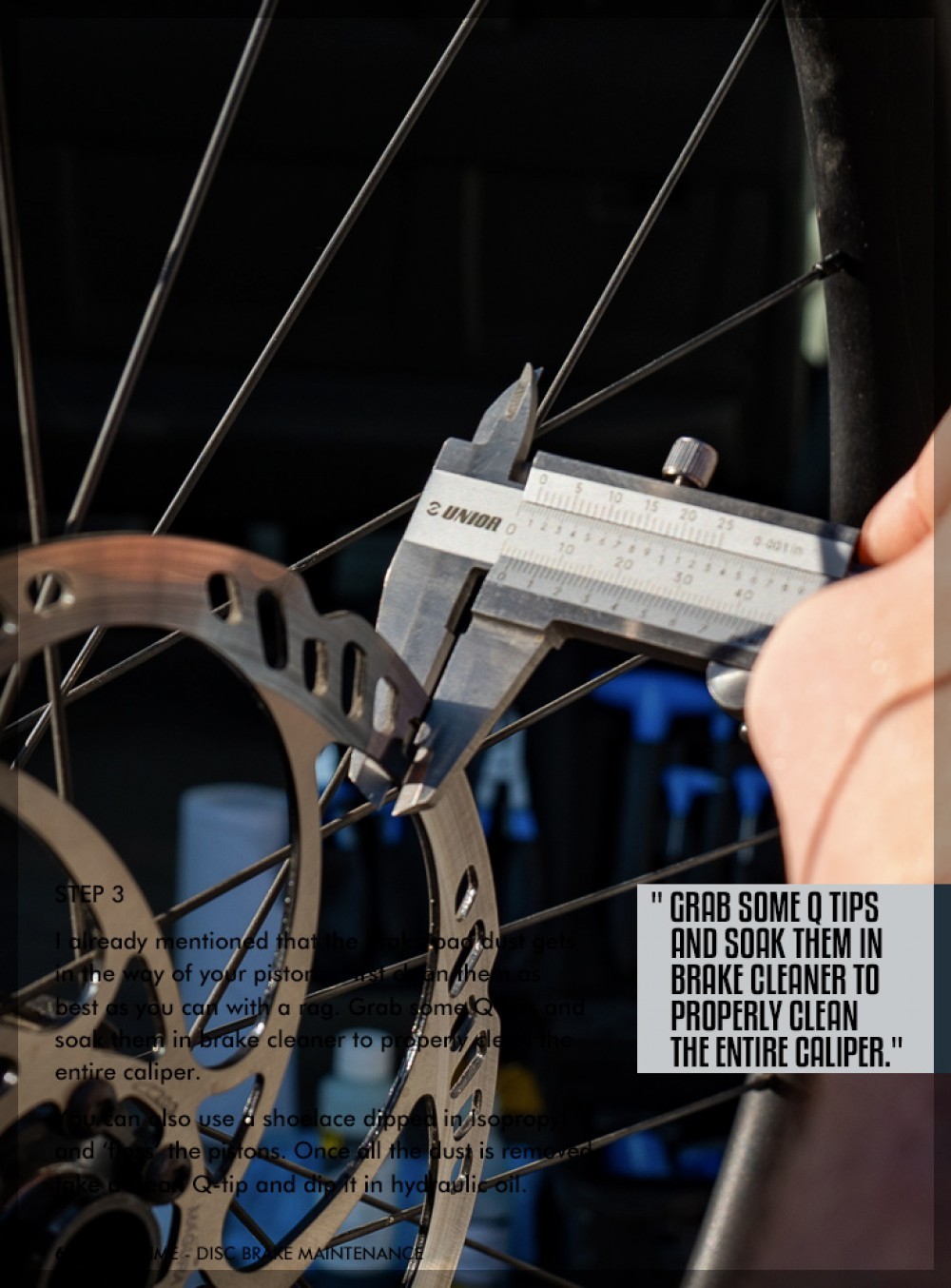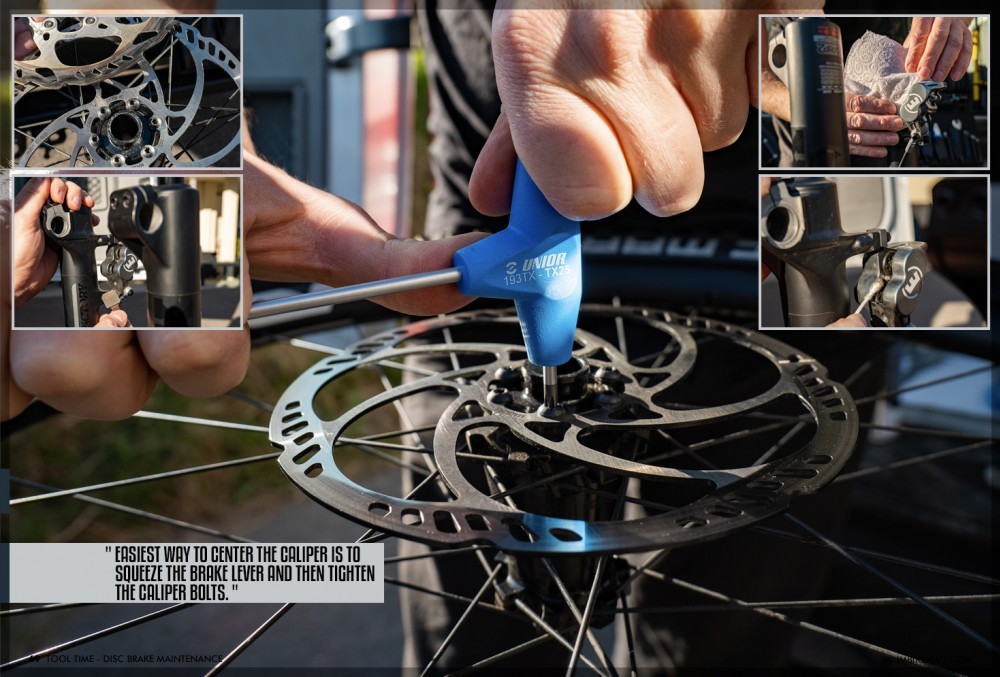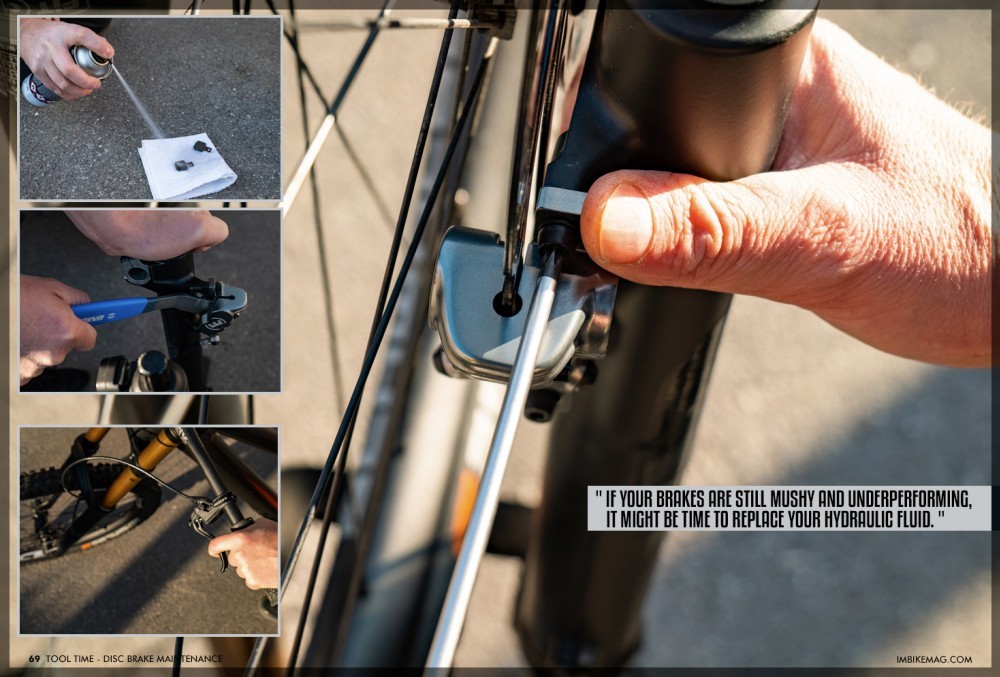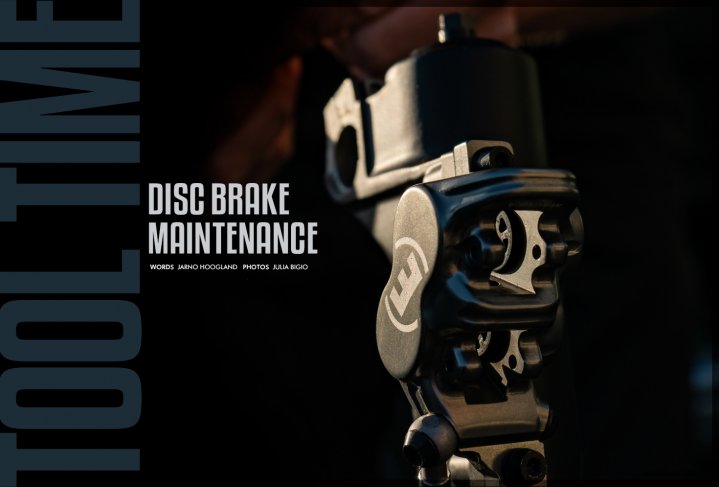
Tool Time - Disc Brake Maintenance
Issue 69 / Tue 29th Mar, 2022
Brakes see a lot of abuse, and with some simple maintenance they last a lot longer.
It’s been a long winter, and your bike is making all kinds of noises it didn’t use to make. The shifting is a little off, suspension lost it’s small bump sensitivity and the brakes no longer have that bite that you’re used to.
Bike shops tend to have their workshops fully booked these days, and spare parts are in short supply so we decided to help you out a little and launch a new regular: Tool Time! Each issue we will tackle a problem, explain how things work, explain why stuff fails and how to bring it back to life again.
First up is the good old disc brakes. Spongy feel at the lever? Lack of braking power? Rubbing noises? It’s all too common. With so much friction, even the best of brakes need some loving every now and then.
Step 1
After giving your bike a good wash, take out the wheels. Just because you threw some water on it, doesn’t mean the bike is clean. Grab a can of brake cleaner and a clean rag. Give the discs a good clean, and check if they are not worn out. Most brands have a minimum thickness requirement of 1.8mm, and I guarantee you if you replace your brake pads too late, your disc will need to be replaced.
Step 2
With the disc clean, straight and the correct thickness, it's time to move on to the pads. These are the usual suspects when it comes to bad braking performance. What usually happens is that the dust from the brake pads ends up on the caliper pistons. Blocking the movement of the piston, causing the pads to drag ending up with uneven wear on your pads.
Remove the pads, give them a good clean with brake cleaner and replace them if worn. Remember it’s better to replace them early than late! Pads cost about 20 Euros, replacement discs are usually double that.
Step 3
I already mentioned that the brake pad dust gets in the way of your pistons. First clean them as best as you can with a rag. Grab some Q tips and soak them in brake cleaner to properly clean the entire caliper.
You can also use a shoelace dipped in Isopropyl and ‘floss’ the pistons. Once all the dust is removed, take a clean Q-tip and dip it in hydraulic oil. By rubbing a tiny amount of oil on the sides of the piston, you make sure they can move smoothly in and out of the caliper again. No need to overdo it though a tiny little bit is enough.
To make sure you don’t damage the pistons as you push the pistons back in, I usually install a set of worn out brake pads. Once the pistons are back in place, replace the pads for new ones, put your wheels back.
Step 4
To make sure there is no rubbing or dragging of the brakes, we need to re-center them. Release the bolts that hold the caliper on your frame or forks just enough so you can move the caliper around freely.
Easiest way to center the caliper is to squeeze the brake lever and then tighten the caliper bolts. Make sure to alternate when tightening the bolts, if you tighten one completely with the second bolt still loose, the caliper might move and you end up with a rubbing brake.
Sometimes, the rotating of the caliper bolts when tightening them misaligns the caliper itself. When this happens, it’s best to hold the caliper in place with one hand, while tightening the bolt with the other. Patience is key with this part, as the tolerances are really tight with mountain bike brakes.
There you go, a quick and easy job that will make your bike perform a lot better, while reducing wear and tear on your components. If your brakes are still mushy and underperforming, it might be time to replace your hydraulic fluid. Depending on the use, it can get pretty dirty over time and lead to spongy brakes.
For now, we’ll leave brake bleeding to another episode of Tool Time!
By Jarno Hoogland
Jarno's life has revolved around two wheels ever since he swung a leg over his first BMX at age 4. After a BMX and DH racing career, he moved on to work for bike shops, distributors and brands before ending up in the editors seat at IMB. Based in the ultimate testing ground in the Swiss mountains, he runs his guiding operation and makes sure every IMB issue is filled with top notch content.




